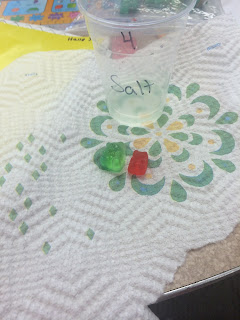 The students in my 2nd grade social studies class have been working on the geography of our community and maps. As a culminating activity, students took on the role of community planners and developed their own communities. Before we started the building, we had to do a lot of planning. (Thank you Hippo Hooray for 2nd Grade for the awesome idea and the community planning sheet freebie) We started out reviewing rural, suburban, and urban communities and what characteristics make them what they are. Then we made a list of important features of every community such as police station, fire station, hospital/doctor's office, school, grocery store, etc. Finally, once we finished our classroom community brainstorming, students completed their community planning sheet. This sheet gave them an outline to go by as they were constructing their communities and it was a nice formative assessment for me to evaluate if students completely understood the ideas we had learned.
The students in my 2nd grade social studies class have been working on the geography of our community and maps. As a culminating activity, students took on the role of community planners and developed their own communities. Before we started the building, we had to do a lot of planning. (Thank you Hippo Hooray for 2nd Grade for the awesome idea and the community planning sheet freebie) We started out reviewing rural, suburban, and urban communities and what characteristics make them what they are. Then we made a list of important features of every community such as police station, fire station, hospital/doctor's office, school, grocery store, etc. Finally, once we finished our classroom community brainstorming, students completed their community planning sheet. This sheet gave them an outline to go by as they were constructing their communities and it was a nice formative assessment for me to evaluate if students completely understood the ideas we had learned.Once the planning phase was complete, it was time to construct. This was an in class project; however, I did send a note to parents explaining the project and that their child may need to bring in some supplies from home to build their community. I let students be creative with their constructions and allowed their likes and personalities to come out in their projects. I did not limit their communities to humans only as inhabitants of the communities, which you can see in some of the photos taken. (The first photo is of a community named Taco Kitty Town. Community members include cats and mice.)
 Overall, we had a lot of fun with this project and got to show off our community planning skills and knowledge. The students were so excited to take their projects home and show them off.
Overall, we had a lot of fun with this project and got to show off our community planning skills and knowledge. The students were so excited to take their projects home and show them off.
Ice Cream Town


Trapper Town- Community members live in
log cabins and trap and hunt for a living.




